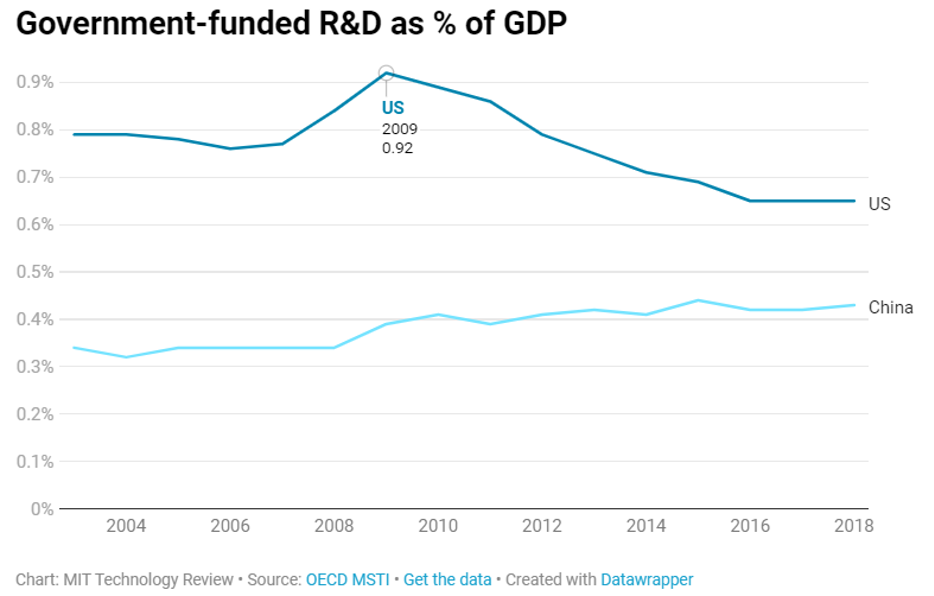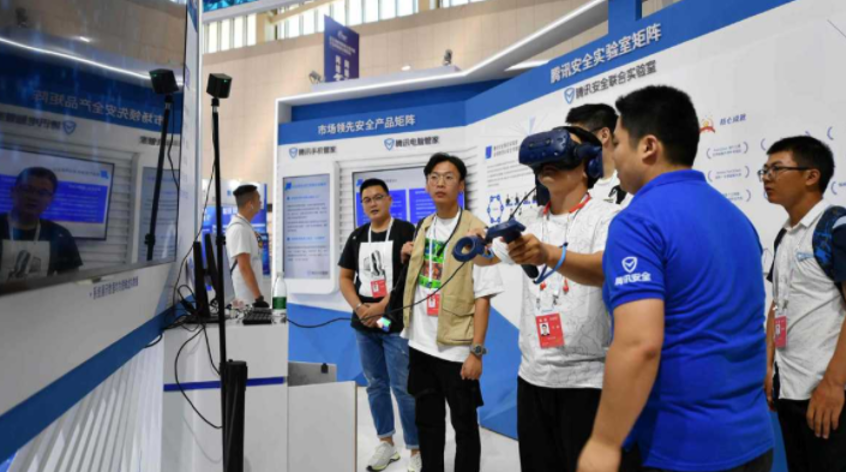Heading into a fresh Presidential term, the tech war against China must be addressed or the U.S. faces the prospect of falling behind China by the next U.S. Presidential election.
By that time, the U.S. might not be able to recover.
China’s political leaders have endorsed a five-year growth plan focused on reducing the economy’s reliance on foreign investment and technology.
And this squarely means the U.S.
Following a Communist Party’s Central Committee Meeting, the Chinese have hatched a grand “vision” for the economy as far off as 2035.
“It is the first time ever in the history of our party’s five-year plans…that China is placing the plans on science, technology, and innovation before all other sectors,” Said Wang Zhigang, China’s minister of science and technology.
This specifically means that China is done being “factory of the world” and is gunning for Silicon Valley’s milk and honey.
Chinese tech giants such as Huawei Technologies, the nation’s largest telecommunications equipment manufacturer, and Semiconductor Manufacturing International Corp., China’s largest semiconductor maker are two central figures that will execute the plans for Chinese Communist’s pivot to technology.
But according to a Financial Times report, Huawei has run out of supply of chips and is looking into manufacturing their own without any experience doing so.
This situation is brutal for the Chinese simply because they don’t have the wherewithal to achieve this great task.
Total self-reliance may remain elusive because China’s communist apparatus is not conducive to producing top-class engineers.
Remember that much of their technology is “borrowed” and they will have to drive forward that same strategy if they want to surpass the U.S. in technological prowess.
I just don’t believe China can organically outgun the U.S. in technology, they simply aren’t built to deliver that result.
Chips aren’t as easy to make as a pair of running shoes or a plastic rubber ducky - these are tough technologies to master.
Part of the blame must be shared with the pitiful Chinese education system that is a pay-to-play type of structure.
The coronavirus has translated into foreign government being extra careful in the technologies they harness and now allowing China to raid these precious secrets.
China is now officially classified as a strategic adversary and it will be a tough slog for China moving forward because the low-hanging fruit has already been harvested.
There also exists the possibility that Democratic Presidential hopeful Joe Biden will be even more staunch against the economic and technological onslaughts of the Chinese Communist Party.
The green shoots have already started to show up as legislation for tech investment takes root.
This summer, a bipartisan group of legislators led by the Democratic senator Chuck Schumer and the Republican Todd Young introduced the Endless Frontier Act. It calls for investing $100 billion over five years to expand the NSF and to fund research in key fields, such as AI, quantum computing, biotech, advanced energy, and materials science.
Biden has proposed spending even more—$300 billion over four years—on federal investments in R&D. His plan calls for major increases in technologies such as AI, 5G, and advanced materials.
The Trump administration has increased investment in five key “industries of the future”—AI, quantum computing, 5G, advanced manufacturing, and biotechnology—albeit not on the scale Biden is calling for.
Made in China 2025 was launched in 2015, and in that year alone, the Chinese government created about $220 billion of state-backed investment funds to support it.
The U.S. would likely dip into their debt instruments to release unlimited capital to deal with developing emerging technologies.
I wholeheartedly believe that China’s encroachment will inspire a technological revolution in the U.S. that is first fueled by government institutions and the peripheries supported by the venture capitalists.
On a microeconomic level, the U.S. has far too large of an edge in semi chip engineers than the Chinese, although China has closed the gap.
The attractiveness of the U.S. from the fiscal side is evident as Chinese tech companies still dream of going public in New York and not Hong Kong or Shenzhen.
Much of the hype around Chinese technology is still hype and that’s all.
Just take for instance the newest Huawei premium smartphone that was billed to be better than the iPhone.
The truth is that it’s a poorly operating smartphone and performs as a mid-level phone.
The Chinese Communist Party has been great at controlling the media narrative around their economical and technological rise, but I am here to call it out to the point where I believe they are still a “paper tiger.”
Many people “in the know” tell me that China’s economy hasn’t been growing for the past 7 years and their “superior” technology is repurposed technology borrowed from western countries that is already outdated in the West.
Just because media suppression is insane in Beijing and any negative journalistic take will be squashed in seconds, it doesn’t mean they have the best technology in the world.
I heard that Chinese tech is “ahead” in 5G, artificial intelligence, and autonomous driving but I have seen nothing that would verify this claim.
Peel back the layers and I do believe the Chinese tech scene is closer to a Potemkin’s Village than Moscow’s Red Square.
In the next four years, the U.S. will visibly surge in front of China as the real tech dominator.
This means that investors should be long technology stocks after this short-term consolidation.



